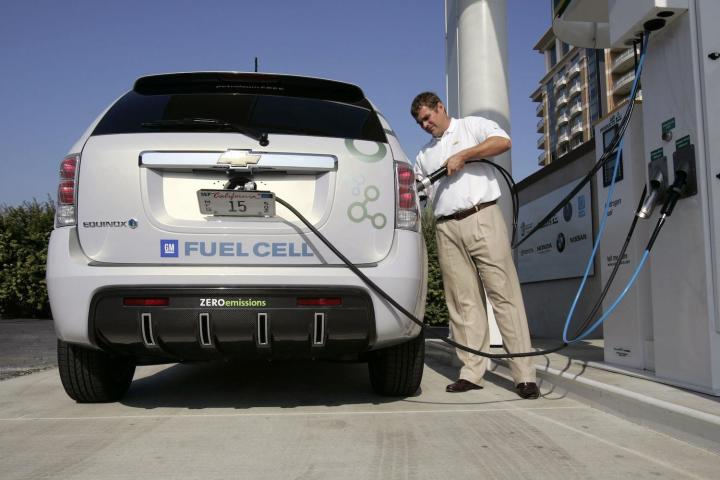
If the recent expansions of the hydrogen filling station network were not enough there is another reason to be optimistic about the future of hydrogen cars. Today General Motors announced that it will be partnering with the United States military in pioneering new fuel cell technology.
GM will be working with the U.S. Army Tank Automotive Research, Development & Engineering Center (TARDEC) – fully one quarter of defense spending must go to acronyms – on developing and testing new fuel cell materials and designs.
GM has already been a leader in the field of fuel cells, having filed more fuel cell patents than any company in the last decade. I had to double check this because I am just so unused to any American automaker being the leader in anything to do with alternative fuel. But it turns out its true. Go figure.

One of the major goals for both GM and TARDEC is to improve hydrogen storage. Currently, hydrogen storage requires using complicated, expensive, and potentially unsafe high-pressure storage tanks. Whether you want to build a safe commuter car or a for tank driving over IEDs, the last thing you want is a fragile fuel cell packed with hydrogen.
The research itself will take place at both GM’s new lab and TARDEC’s state of the art facility in Warren, Michigan. It may be a long way from the factory floor, but it is always good to see signs of life from the automotive industry on its home turf.
For the Army’s part, it is expecting to use fuel cells for everything from generators to combat vehicles. No specific projects have been named, but this effort is taking place against a backdrop of other programs looking to a post-fossil fuel military. I for one am looking forward to the U.S. Army becoming a lean, green, fighting machine, one that guards us against our nation’s enemies and carbon emissions.
GM has been aggressive in expanding its foothold in hydrogen, having already partnered with Honda on a long-term research and development project. When viewed with the other developments in hydrogen fuel cells and filing stations, it appears that H2 is the way forward and not EVs.
Only the future will say for sure, but at least both directions appear to be flammable.


